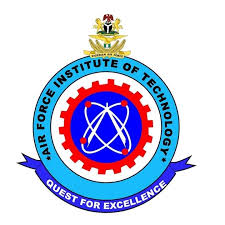Computer Science Keypoints: Artificial Intelligence (AI) and Robotics; Artificial Intelligence (AI) and Robotics represent cutting-edge fields that have significantly impacted various aspects of human life. AI refers to the simulation of human intelligence in machines, enabling them to perform tasks that typically require human intelligence.
Study other Computer Science Keypoints here
Computer Science Keypoints: Artificial Intelligence (AI) and Robotics
Robotics, on the other hand, deals with the design, construction, operation, and use of robots, which are machines capable of carrying out complex tasks autonomously or semi-autonomously.
1. Definition of AI
Artificial Intelligence, often abbreviated as AI, is the branch of computer science concerned with creating intelligent machines that can perform tasks requiring human-like intelligence. These tasks include learning, reasoning, problem-solving, perception, understanding natural language, and more. AI systems are designed to adapt and improve their performance over time as they gather more data and learn from experience.
2. Branches of AI
i. Machine Learning: Machine Learning (ML) is a subset of AI that focuses on the development of algorithms that allow computers to learn from and make predictions or decisions based on data without being explicitly programmed. It is categorized into three main types:
- Supervised Learning: Algorithms learn from labeled data, making predictions or decisions based on that data.
- Unsupervised Learning: Algorithms learn from unlabeled data, finding hidden patterns or intrinsic structures within the data.
- Reinforcement Learning: Algorithms learn by interacting with an environment, and receiving feedback in the form of rewards or penalties.
ii. Neural Networks: Neural networks are a class of algorithms inspired by the structure and function of the human brain. They consist of interconnected nodes, or neurons, organized in layers. Neural networks are capable of learning complex patterns from data and are widely used in tasks such as image and speech recognition, natural language processing, and more.
iii. Expert Systems: Expert systems are AI systems designed to emulate the decision-making abilities of a human expert in a specific domain. They use knowledge bases and reasoning algorithms to provide advice or solutions to problems within their area of expertise.
iv. Fuzzy Logic: Fuzzy logic is a form of multi-valued logic that allows for degrees of truth rather than strict binary (true or false) values. It is particularly useful in systems where data is imprecise or uncertain, such as in control systems for industrial processes or consumer electronics.
v. Natural Language Processing (NLP): NLP involves the interaction between computers and humans using natural language. It enables computers to understand, interpret, and generate human language, facilitating tasks such as language translation, sentiment analysis, and chatbot interactions.
vi. Deep Learning: Deep learning is a subset of machine learning that employs artificial neural networks with many layers (hence the term “deep”). It has revolutionized AI by achieving remarkable performance in tasks such as image and speech recognition, language translation, and autonomous driving.
3. Applications of AI
i. Robotics: AI plays a crucial role in robotics by enabling robots to perceive their environment, make decisions, and perform tasks autonomously. Examples include industrial robots used in manufacturing, autonomous drones for surveillance or delivery, and humanoid robots for various applications.
ii. E-Commerce: AI is used in e-commerce platforms for personalized product recommendations, customer service chatbots, fraud detection, and supply chain optimization.
iii. Navigation: AI-powered navigation systems utilize algorithms such as machine learning and deep learning to provide real-time traffic updates, route optimization, and autonomous vehicle navigation.
iv. Human Resource: AI is used in human resource management for resume screening, candidate sourcing, employee engagement analysis, and workforce planning.
v. Healthcare: AI applications in healthcare include medical image analysis, disease diagnosis, personalized treatment recommendations, drug discovery, and patient monitoring.
vi. Agriculture: AI technologies are employed in precision agriculture for crop monitoring, yield prediction, pest detection, irrigation management, and autonomous farming equipment.
vii. Gaming: AI enhances gaming experiences by providing realistic non-player character behaviors, adaptive difficulty levels, procedural content generation, and player behavior analysis.
viii. Automobiles: AI powers advanced driver assistance systems (ADAS), autonomous vehicles, predictive maintenance, and smart traffic management in the automotive industry.
ix. Social Media: AI algorithms are used in social media platforms for content recommendation, sentiment analysis, user profiling, and targeted advertising.
x. Marketing: AI aids marketers in customer segmentation, personalized marketing campaigns, predictive analytics, and dynamic pricing strategies.
In conclusion, the synergy between Artificial Intelligence and Robotics has led to remarkable advancements across various domains, shaping the way we live, work, and interact with technology. As these fields continue to evolve, their potential to drive innovation and solve complex challenges is boundless.









